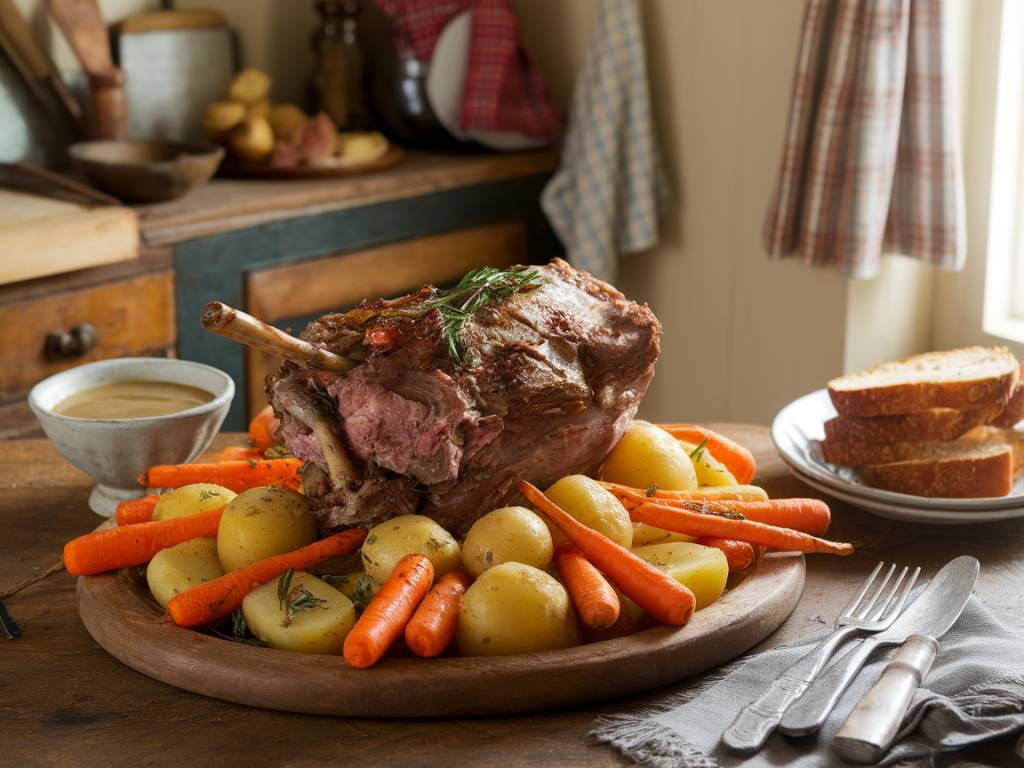Traditional Welsh cuisine and its cultural origins

Traditional Welsh cuisine and its cultural origins
Exploring the Rich Flavours of Traditional Welsh Cuisine
When we think of Wales, the immediate images that come to mind might be of rolling green landscapes, rugged coastlines, and centuries-old castles. But what about its cuisine? Welsh food often hides in the shadow of its better-known neighbours, but it has a culinary heritage that’s as rich and varied as the country’s history itself. Join me as I delve into the hearty dishes, historic roots, and cultural significance of Welsh cuisine. Spoiler alert: You’ll likely leave this article hungry!
A Taste of History: The Origins of Welsh Cuisine
The story of Welsh food is deeply intertwined with the nation’s geography, history, and economy. For centuries, Wales has been a predominantly agricultural society, with a focus on self-sufficient farming. This simple, rural way of life shaped much of the food we now think of as quintessentially Welsh. Small cottages dotted across the valleys and coasts relied on local ingredients—grain, dairy, lamb, shellfish—to craft meals that were hearty, nourishing, and made to withstand the often harsh Welsh climate.
As with any cuisine, invaders and traders left their mark on Welsh recipes. The Romans brought leeks, a vegetable now symbolic of Wales itself. The Normans introduced advanced farming techniques, which allowed for a broader range of crops and livestock. Even the country’s humble seaweed, laver, has connections to ancient trading routes, its popularity stretching back to the earliest communities along the Welsh coast.
Staples of the Welsh Kitchen
What defines Welsh cuisine? Let’s take a closer look at some of its most iconic staples:
- Lamb: It’s almost impossible to discuss Welsh food without mentioning lamb. Wales’ lush green hillsides and temperate climate make it ideal for sheep farming. While roast lamb has become a favourite, traditional recipes also feature lamb in stews, such as Cawl—a heartwarming dish often dubbed the Welsh national dish.
- Leeks: This humble vegetable holds a special place not just in Welsh kitchens but also in the country’s symbolism. Whether in soups or paired with potatoes in creamy dishes, leeks are a versatile and much-loved ingredient.
- Seafood: With miles of coastline, Wales has a deep connection to the sea. Dishes like Laverbread—a purée made from seaweed—and fresh cockles harvested from places like the Burry Inlet offer a taste of the coastal way of life.
- Cheese: Welsh cheeses like Caws Cenarth or Y Fenni have gained recognition far beyond the country’s borders. They serve as delicious reminders of Wales’ dairy farming heritage.
Iconic Dishes: A Culinary Journey
Beyond the raw ingredients, traditional Welsh cuisine shines through its iconic dishes. Some you may have come across before, others may surprise you. Let’s explore some highlights:
- Welsh Rarebit: Often described as « posh cheese on toast, » Welsh Rarebit is a simple yet indulgent dish. The cheese sauce, typically made with mustard and beer, is poured over toasted bread and grilled to perfection. It’s a comfort food classic and a staple in many Welsh households.
- Cawl: As mentioned earlier, Cawl is a traditional one-pot stew featuring lamb, leeks, potatoes, and carrots. Each family has its own take on this beloved recipe, often passed down through generations.
- Bara Brith: Translating to « speckled bread, » this tea loaf is studded with dried fruits that have been soaked in tea. It’s perfect with a generous spread of butter and a hot cuppa.
- Teisen Lap: A traditional Welsh cake that’s less known outside the country but cherished within. Moist and spiced, it’s a delight for those with a sweet tooth.
Now, I have to ask: Which one of these dishes is calling your name? Welsh Rarebit with its unapologetic richness, or a slice of Bara Brith with your afternoon tea?
Food as a Window into Welsh Culture
Beyond its flavours, Welsh food offers a unique insight into the nation’s culture and identity. Shared meals play a vital role in fostering a sense of community, with food often being at the heart of gatherings and celebrations.
Take Cawl, for instance. It’s not just a dish; it’s an experience. Families and neighbours often gather to enjoy a steaming bowl of this hearty stew, swapping stories and laughter as they eat. Likewise, recipes like Bara Brith or Welsh cakes are intimately tied to the domestic sphere, conjuring scenes of cosy kitchens with aromas that invite you to sit down and stay awhile.
Seasonal festivals often feature traditional foods as well. During St David’s Day, the patron saint of Wales is honoured with parades, singing, the wearing of leeks or daffodils—and, naturally, dishes that pay homage to the land’s rich bounty.
Welsh Food Traditions in the Modern World
While some might argue that traditional cuisines are fading in the face of globalisation, Welsh food is enjoying something of a renaissance. Local producers are breathing new life into time-honoured recipes, bringing them to the attention of curious foodies around the world.
Artisan bakeries are crafting modern interpretations of Bara Brith, and gourmet restaurants are incorporating classics like Laverbread into contemporary menus. Farmers’ markets in Cardiff or Aberystwyth offer a treasure trove of locally sourced products, allowing you to experience the authentic taste of Wales.
What’s more, the rise of sustainability and eating locally has dovetailed beautifully with Welsh food culture, which has always been rooted in making the most of what’s grown and produced nearby. Could this renewed interest in traditional and seasonal foods be the key to preserving these culinary treasures?
Visiting Wales? Don’t Forget to Eat!
For those planning a trip to this enchanting part of the world, exploring Wales through its food is a must. From quaint village pubs serving homely dishes to fine dining establishments reinventing age-old recipes, there’s something to suit every palate.
Imagine hiking along the breathtaking Pembrokeshire Coast and stopping at a small café to enjoy freshly baked Welsh cakes and tea. Or dining at one of Cardiff’s bustling markets, where the aroma of locally sourced cheeses and lavercakes fills the air. Doesn’t that sound like the perfect way to connect with Welsh culture?
Your Turn: Dive Into Welsh Cuisine
So, whether you’re lucky enough to visit Wales or just want to experiment in your kitchen, why not delve into its culinary heritage? Try your hand at baking a loaf of Bara Brith, or whip up some Welsh Rarebit for a cosy evening treat. Once you’ve had a taste, it’s likely you’ll understand why the people of Wales hold their food so close to their hearts.
After all, food isn’t just sustenance—it’s a gateway to stories, histories, and memories. And in Wales, every bite has a tale to tell.





